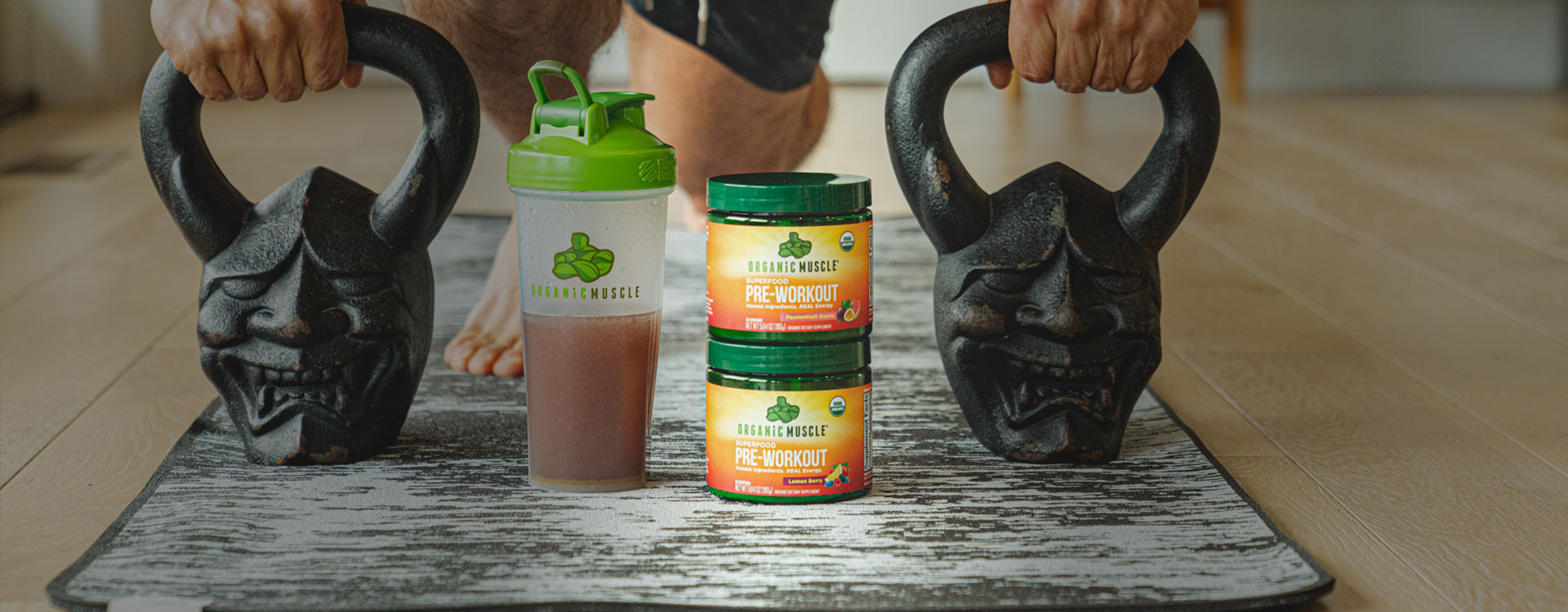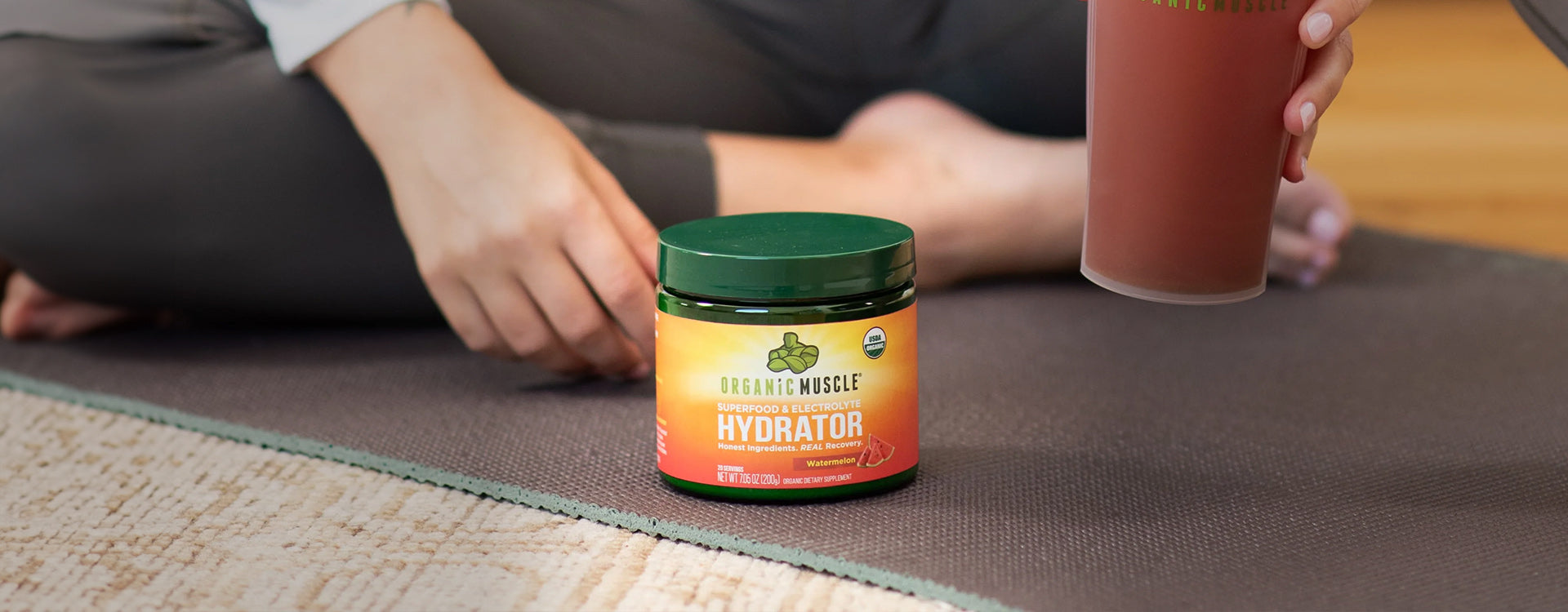Key Takeaways:
- Holistic Fitness Approach: Kettlebell workouts engage multiple muscle groups, promoting functional strength, flexibility, and endurance, making them suitable for all fitness levels.
- Efficient Fat Burning: Kettlebell exercises' high intensity aids in efficient fat burning, allowing for significant calorie expenditure in shorter workout sessions.
- Versatile Workouts: From swings to Turkish get-ups, kettlebells offer a variety of exercises that target core, lower, upper, and back muscles, enabling comprehensive full-body conditioning.
Looking for a way to build full-body strength while improving overall fitness? Kettlebell workouts might be the perfect solution. Much like a multi-tool in a toolbox, kettlebells offer versatility in training, allowing you to work multiple muscle groups simultaneously while enhancing endurance and flexibility. Whether aiming to improve core strength, boost cardiovascular health, or increase overall power, kettlebells provide an efficient way to achieve your fitness goals.
In this article, we’ll explore the top kettlebell workouts designed to enhance full-body strength and fitness. Each exercise targets multiple muscle groups, offering a comprehensive approach to building power, stability, and endurance.
What Are Kettlebell Workouts?
Kettlebell workouts stand as a cornerstone in the fitness regimen of enthusiasts seeking a harmonious blend of strength, flexibility, and endurance. These workouts, centered around using a kettlebell, a cast-iron or cast steel ball with a handle attached to the top, are designed to propel individuals toward comprehensive full-body fitness. Unlike traditional weight training, which often isolates specific muscle groups, kettlebell exercises engage multiple muscle groups simultaneously, offering a holistic approach to fitness.
The versatility of kettlebell workouts is unmatched, accommodating a wide range of movements from swings, snatches, cleans, and presses to more complex flows and sequences. These movements build muscle strength, improve cardiovascular health, boost endurance, and enhance flexibility and balance. Essentially, kettlebell workouts deliver a high-intensity workout that can be completed relatively quickly, making it an ideal choice for those with busy schedules.
Benefits Of Kettlebell Workouts
Here are some of the core benefits of integrating kettlebell exercises into your fitness routine:
Enhances Functional Strength
Unlike conventional weight training, kettlebell workouts incorporate movements that mimic real-world activities. This approach helps build strength and improves functional fitness, meaning the strength you build in your workouts translates into better performance in daily tasks and activities.
Boosts Cardiovascular Health
Kettlebell exercises are known for their ability to provide a high-intensity cardiovascular workout. The constant motion involved in kettlebell exercises, such as swings and snatches, elevates the heart rate, promoting heart health and improving endurance.1 This dual benefit of cardiovascular and strength training ensures a holistic approach to health and fitness.
Promotes Flexibility and Mobility
The dynamic nature of kettlebell workouts requires a wide range of motion, enhancing flexibility and joint mobility. Regular kettlebell training can help alleviate stiffness and promote better movement efficiency, reducing the risk of injury in daily life and other physical activities.
Efficient Fat Burning
Kettlebell workouts are incredibly efficient at burning fat due to their high intensity and the combination of strength and cardio exercises.2 This efficiency means you can achieve significant calorie burn in a shorter duration than other forms of workout, aiding in faster weight loss and body toning.
Improves Balance and Coordination
The off-centered weight of a kettlebell challenges your body’s balance and coordination. Regular training will improve your body's ability to stabilize itself, enhancing athletic performance and reducing the risk of falls and injuries.
Key Muscles Targeted By Kettlebell Workouts: Understanding Your Body
Understanding the key muscles targeted can help you tailor your workouts to meet your personal fitness goals while also ensuring you're training in a balanced and effective manner. Here's a closer look at the primary muscles kettlebell exercises work:
Core Muscles
The core is central to kettlebell exercises. Movements such as kettlebell swings, Turkish get-ups, and windmills activate the rectus abdominis, obliques, and the deeper transverse abdominis muscles. Strengthening these core muscles improves posture, stability, and overall athletic performance.
Lower Body Muscles
Kettlebell workouts intensely work the lower body, including the quadriceps, hamstrings, glutes, and calves. Exercises like goblet squats, lunges, and deadlifts build muscle and improve lower body strength and endurance. These movements mimic everyday functional movements, enhancing your ability to perform daily activities easily.
Upper Body Muscles
The versatility of kettlebell exercises extends to the upper body, targeting the chest, back, shoulders, and arms. Kettlebell presses, rows, and snatches are excellent for developing upper body strength, muscle tone, and shoulder stability. These exercises also engage the smaller stabilizing muscles, vital for joint health and injury prevention.
Back Muscles
Kettlebell workouts are particularly effective for strengthening the entire back. Exercises like kettlebell swings and renegade rows engage the latissimus dorsi, rhomboids, and traps, promoting a strong, well-defined back and improving posture.
Grip and Forearm Muscles
The kettlebell's unique shape and weight distribution provides a formidable grip-strength workout. Holding, swinging, or lifting a kettlebell requires substantial grip strength, which works the forearm muscles. This improved grip strength has practical benefits for daily living and enhanced performance in other forms of physical activity.
Essential Kettlebell Exercises For Full-Body Fitness
Below, we’ve outlined several essential kettlebell exercises to catalyze your journey toward full-body fitness.
Kettlebell Swing
The kettlebell swing is the cornerstone of kettlebell training. This dynamic exercise targets your posterior chain muscles, such as the glutes, hamstrings, and lower back, improving your power and endurance. Stand with your feet shoulder-width apart, holding the kettlebell with both hands.
end at your hips to swing the kettlebell between your legs, then thrust your hips forward to swing the kettlebell up to chest height. Repeat this movement, maintaining a strong and engaged core throughout the exercise.
Kettlebell Goblet Squat
The goblet squat is an excellent exercise for building strength in the legs, glutes, and core while also improving flexibility in the hips and ankles. Hold the kettlebell at chest level with both hands, keeping your elbows close to your body.
Squat down, pushing your knees out and keeping your back straight, then drive through your heels to return to the starting position. This exercise is effective for building muscle and enhances your balance and posture.
Kettlebell Turkish Get-Up
The Turkish Get-Up is a complex, multi-step exercise that engages nearly every muscle in the body, promoting strength, stability, and coordination. Starting from a lying position, hold the kettlebell in one hand, extending your arm straight above you.
Sequentially move into a seated position and then to a standing position, keeping your eyes on the kettlebell and your arm extended. Reverse the movement to return to the starting position. This exercise requires precision and control, making it a profound workout for enhancing overall body strength and functionality.
Kettlebell Clean and Press
The clean and press combine power and finesse by working both the upper and lower body, improving your strength, coordination, and explosive power. Begin by swinging the kettlebell back between your legs, then rapidly extend your hips to swing it up, catching it at shoulder height.
From there, press the kettlebell overhead until your arm is fully extended, then carefully lower it back to the starting position. This exercise effectively works the shoulders, arms, back, and legs.
Single-Arm Kettlebell Row
This exercise targets the muscles in your back, arms, and shoulders, emphasizing unilateral strength and helping to correct imbalances. Place one hand on a bench, keeping your back flat and holding a kettlebell in your free hand.
Row the kettlebell towards your hip, keeping your elbow close to your body, then slowly lowering it down. This focused movement not only strengthens the back but also enhances core stability.
A Sample Kettlebell Workout Routine
Embarking on a fitness journey with a kettlebell can be both empowering and effective in achieving full-body fitness and strength. Below is a sample kettlebell workout routine designed to target various muscle groups, enhance endurance, and promote overall health.
Warm-Up (5 minutes):
- Kettlebell Halo (3 sets of 8 reps each side): Stand with feet shoulder-width apart, holding the kettlebell by the handles in front of your chest. Slowly circle the kettlebell around your head, making a "halo" motion. This warms up your shoulders, neck, and arms.
- Kettlebell Swings (3 sets of 15 reps): Begin with the kettlebell on the ground between your feet, square to your hips. Bend slightly at the knees but hinge mainly at the hips to grasp the kettlebell and pull it backward between your legs before propelling it forward to shoulder height. This engages your posterior chain muscles.
Main Workout:
- Kettlebell Goblet Squat (4 sets of 12 reps): Hold the kettlebell close to your chest with both hands. Squat down, keeping your chest up and back straight. Push through your heels to return to the standing position. This targets your lower body and core.
- Kettlebell Single-Arm Press (4 sets of 8 reps each arm): Start with the kettlebell in the rack position at chest level, then press it overhead, locking out your elbow. This move strengthens your shoulders and improves stability.
- Kettlebell Sumo Upright Row (3 sets of 10 reps): With legs wider than hip-width apart, squat down and grab the kettlebell with both hands. Pull the kettlebell towards your chin as you stand, leading with your elbows. This works your upper body and improves flexibility in the hips.
- Kettlebell Renegade Row (3 sets of 6 reps each side): In a high plank position, with a kettlebell in each hand, row one kettlebell to your side while stabilizing your body with the other arm. Alternate sides. This exercise strengthens the core, back, and arms.
Cool Down (5 minutes):
Stretching and light cardio, such as walking or jogging, can help lower your heart rate and prevent muscle stiffness. Incorporating flexibility exercises and focusing on breathing can also aid recovery and ensure you're ready for your next workout.
Tips For Getting Started With Kettlebell Training
Here are some valuable tips to ensure a solid foundation as you integrate kettlebell workouts into your fitness routine.
Choose the Right Kettlebell
Selecting an appropriate kettlebell weight is the first, fundamental step. If you're new to kettlebell training, it’s advisable to start with a lighter weight until you're comfortable and confident with the movements. A general guideline for beginners is 8kg (18lbs) for women and 16kg (35lbs) for men. However, the right weight for you should allow a balance between control and challenge.
Focus on Form
Before delving into complex movements, ensure that your form is impeccable. Poor form not only hampers your progress but significantly increases the risk of injury. Consider investing in a few sessions with a certified kettlebell instructor or carefully follow reputable online tutorials to understand the mechanics of basic kettlebell exercises like the swing, goblet squat, and Turkish get-up.
Prioritize Safety
Establishing a safe training space is essential, given the dynamic nature of kettlebell exercises. Ensure you have enough room to perform swings and other movements without restriction. Sturdy, non-slip shoes can also prevent slipping and provide a stable base for lifting.
Warm-Up Properly
A thorough warm-up prepares your body for the rigors of kettlebell training, enhancing performance and preventing injury. Incorporate dynamic stretches focusing on mobility and stability, particularly targeting the shoulders, hips, and hamstrings.
Integrate Complementary Practices
While kettlebells offer a comprehensive workout, integrating other fitness disciplines can enhance your overall performance and recovery. Practices like yoga and Pilates improve flexibility and core strength, supporting your kettlebell training goals. Additionally, mindfulness and breathing exercises can enhance focus and mind-muscle connection.
Listen to Your Body
Lastly, while pushing your limits can lead to growth, it is crucial to recognize the difference between beneficial discomfort and harmful pain. Listen to your body; stop and reassess your technique if a movement feels wrong. Ensure adequate recovery between sessions to allow your muscles to repair and grow stronger.
Kettlebell Workouts For Different Fitness Levels: Finding Your Fit
Below, we detail various kettlebell exercises suitable for beginners, intermediates, and advanced fitness enthusiasts. These tailored workouts are designed to meet you where you're at in your fitness journey, ensuring you can safely progress at your own pace.
Beginner Workouts
For those new to kettlebell training, the focus should be on mastering form and building foundational strength. Start with lighter weights to avoid injury.
- Kettlebell Deadlifts: This exercise is perfect for beginners, as it teaches the basic movement pattern essential for more complex lifts. It targets the glutes, hamstrings, and lower back.
- Kettlebell Swings: A quintessential exercise that works the entire posterior chain (back, glutes, and hamstrings) while boosting cardiovascular fitness.
- Kettlebell Goblet Squats: Enhances lower body and core strength, focusing on the quads, calves, and abdominal muscles.
Intermediate Workouts
Once you're comfortable with beginner movements and have built some strength, intermediate workouts will introduce you to more dynamic exercises.
- Kettlebell Clean and Press: A two-part exercise that works the entire body, improving power and coordination.
- Kettlebell Snatch: This exercise builds on the swing's momentum to work the shoulders and back more intensively, and it also offers a cardio workout.
- Kettlebell Turkish Get-Up: A complex movement that targets multiple muscle groups and improves overall mobility and stability.
Advanced Workouts
For those with a solid foundation in kettlebell training, advanced workouts will challenge your strength, endurance, and technique.
- Kettlebell Windmill: This exercise enhances flexibility and strength, particularly in the hamstrings and obliques, while also challenging balance.
- Double Kettlebell Clean and Squat: An evolution of the single kettlebell clean and press, this exercise requires superior coordination and strength and targets virtually every major muscle group.
- Kettlebell Flow: A sequence of movements performed back to back without rest. Flows are customizable and challenge your cardiovascular system, endurance, and technique.
Final Thoughts
Incorporating kettlebell workouts into your fitness routine can profoundly impact your overall strength, flexibility, and cardiovascular health. By engaging multiple muscle groups simultaneously, these workouts offer a unique and efficient approach to training that suits various fitness levels. Whether you're a beginner or an advanced athlete, kettlebells can elevate your workouts, making them more dynamic and effective. With various exercises to choose from and the flexibility to adjust weight and intensity, kettlebells are a valuable tool for anyone looking to enhance their fitness journey.
Our commitment to your health, through our Certified Organic, non-GMO, Vegan, Gluten-Free, Keto-Friendly, and Dairy-Free supplements, aligns seamlessly with the core principles of kettlebell training - safety, efficacy, and holistic wellness. Integrating kettlebell workouts into your routine is not just about enhancing physical strength; it's a journey toward achieving a fuller, more vibrant life.
As you continue exploring kettlebell exercises' vast potential, remember that our supplements are designed to support your fitness and health goals. Organic Muscle is here to complement your journey every step of the way, embodying the values of purity and effectiveness in everything we offer.
Read also:
- 10 Best Ab Workouts To Sculpt Your Core
- Plant-Based Meal Plan For Athletes: Fuel Your Performance Naturally
- Best Glute Workouts For A Stronger, Rounder Booty
Frequently Asked Questions About Top Kettlebell Workouts For Full-Body Fitness And Strength
Are kettlebell workouts suitable for weight loss?
Yes, kettlebell workouts are highly efficient for weight loss. They combine strength training with cardiovascular endurance, allowing you to burn calories quickly while building muscle. The dynamic movements involved in kettlebell exercises can elevate your heart rate, leading to significant calorie burn and potentially weight loss, especially when combined with a healthy diet and other fitness routines.
How often should I do kettlebell workouts?
The frequency of kettlebell workouts should depend on your current fitness level and goals. For beginners, starting two to three times a week can allow your body to adapt to the new workout regime while preventing overtraining. As you become more experienced, you can increase the frequency to three to four times per week, including rest days for optimal recovery and muscle growth.
What is the difference between kettlebells and dumbbells?
The main difference between kettlebells and dumbbells is their shape and the type of exercise you can perform. Kettlebells have a handle above the weight, making them ideal for dynamic movements and exercises that involve swinging, like kettlebell swings, cleans, and snatches. Dumbbells are more suited for static strength exercises and isolated muscle workouts. Depending on your workout goals, both can be effective for building strength and fitness.
How long should a typical kettlebell workout last?
A typical kettlebell workout can last 20 to 45 minutes, including a warm-up and cool-down. The duration will depend on your fitness goals, the intensity of the workout, and your schedule. Even shorter, high-intensity kettlebell workouts can offer significant fitness benefits and calorie burn.
Can kettlebell exercises be done every day?
While kettlebell exercises can be a great addition to your fitness routine, it's important to include rest days to allow your muscles to recover and grow. Doing intense kettlebell workouts daily can lead to overtraining and increase the risk of injury. Balancing your workout routine with moderate exercise, rest days, and other physical activity can promote overall health and prevent burnout.
What should I do if I feel pain during kettlebell workouts?
If you feel pain during kettlebell workouts, it's important to stop the exercise immediately to prevent further injury. Assess the type of pain you're experiencing; if it's muscle soreness, consider reducing the intensity of your workouts or taking a few days off to recover. If the pain persists or is sharp and specific, consult a healthcare provider or a fitness professional to determine the cause and receive appropriate advice on proceeding safely with your fitness routine.
Sources:
- Jaiswal, P. R., Ramteke, S. U., & Saylee Shedge. (2024). Enhancing Athletic Performance: A Comprehensive Review on Kettlebell Training. Cureus. https://doi.org/10.7759/cureus.53497
- Karuppasamy Govindasamy, Hemantajit Gogoi, Nidhal Jebabli, Sultan Mansour Bediri, Aljahni, M., Koulla Parpa, Clark, Urs Granacher, & Hassane Zouhal. (2024). The effects of kettlebell training versus resistance training using the own body mass on physical fitness and physiological adaptations in obese adults: a randomized controlled trial. BMC Sports Science, Medicine & Rehabilitation, 16(1). https://doi.org/10.1186/s13102-024-00894-6
|
Disclaimer: Organic Muscle products are not intended to treat, diagnose, mitigate, prevent, or cure disease. Organic Muscle products should not replace prescribed medications or the variety of foods important to a healthful diet. |













